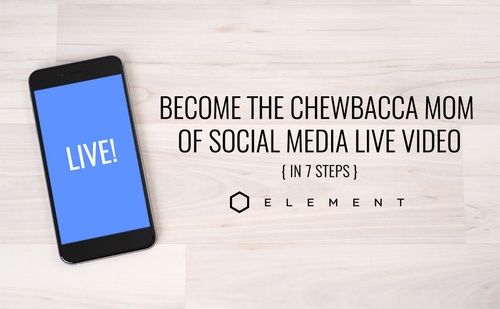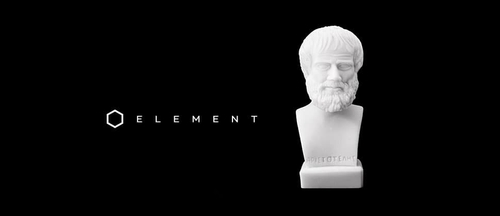Everyone in your company wants to get something different out of content creation.
• SEO specialist: Better rankings, backlinks, and more traffic
• Social media marketer: More engagement
• Public relations director: Lots of press coverage and brand awareness
• Sales reps: More qualified leads with contact information
• The boss: Just wants to know how it’s going to affect the bottom line
First, let’s get one thing straight. You should be creating content for your target audience, not for the people on your marketing team. However, you still need to make decisions concerning what kind of content you should develop.
So, does the best content marketing educate people who have questions, entertain an audience, or sell products and services to prospects? The answer … is yes.
Content Marketing’s “Special Purpose”
You’ll find some people, even marketing experts, who say you shouldn’t use content marketing campaigns to sell. They believe people are sick and tired of being sold to and content creation only works when you are using it for the purest of purposes. How dare you even think of asking people to buy something?!
Content marketing is a means to an end, it’s not the end itself. That’s to say you shouldn’t be creating content for content’s sake. The reason you write articles, produce videos, design e-books, and engage with people on social media is because you have something to sell.
Selling is the end that justifies the means. That’s content marketing’s special purpose.
Conversely, content should avoid being overly promotional. It’s the pushy, in-your-face junk that turns your audience off. This subtle approach aligns with how real-world salespeople work.
Do they immediately start spouting off product features and talk about special discounts or limited-time offers? Nope.
Selling almost always takes time. A good sales rep knows the importance of building relationships.
They take the time to educate prospects by answering questions and providing helpful solutions. They take people out for coffee or cocktails and pick up the bill. They hang out on the golf course and spend time entertaining. They talk about sports, movies, family, and the weather just as much as they talk business. The best sales reps know a lot of details about their clients’ lives so they can relate to them on a personal level.
Both real-world selling and online content marketing require relationship building, which fosters trust. Both take time, involve just as much listening as talking, and ultimately require you to be persuasive.
That’s really what content marketing boils down to. It doesn’t matter how entertaining you are or how much you teach a prospect, if you aren’t making inroads towards persuading people to choose your company, you’re doing it wrong.
The 80/20 Rule and Your Content Marketing Mix
Content marketing should be working in the background to drive new business and generate sales, but we still need to establish whether you should focus on educating your target audience with useful content or generating a buzz with attention-grabbing, entertaining content.
Plus, how far should you go to promote your products and services, and when is the right time to ask for the sale?
A classic rule of thumb to follow with content creation is the 80/20 rule. At least 80 percent of a piece of content should provide value to your target audience, and no more than 20 percent of it should be promotional. By promotional, I mean any portion of the content in which you talk about your company. That includes talking about deals, products, and services as well as mentioning things like company news, charitable giving, and community involvement.
There’s a time and place for direct response marketing in which you try to drive immediate action, and there will be PR opportunities when you’ll want to focus on letting the media and the public know what’s going on with your company.
However, most content marketing that belongs in the categories of owned media and shared media should strike that 80/20 balance. Too much promoting and people will quickly get annoyed. Too much PR and you could look boastful.
One of the biggest mistakes in content marketing is making it all about your company. It’s not. It should be about your audience: their needs, fears, motivations, and dreams. If you’re thinking too much about what the marketing team or your boss will think, your efforts will likely fall flat.
The Path to Purchase Strategy
In order to create effective content for your audience, you need to understand them. That’s why a crucial part of Element’s content marketing strategy is learning about our clients’ customers and their paths to purchase, which are the “journeys” people go on as they make a purchasing decision.
There are five steps along the path to purchase:
1. Needs Awareness – realizing they have a problem to solve or a desire to meet.
2. Research – exploring possible solutions and educating themselves.
3. Consideration and Comparison – checking out options and assessing the competition.
4. Procurement – making the actual purchase decision.
5. Loyalty – becoming a repeat customer who helps spread the word.
Different types of content can serve a certain purpose along each of these five steps.
Content that entertains will be useful at the beginning of the path to purchase. You may need to make your target audience aware you exist, and capturing their attention with something fun and engaging is often the right strategy. Keep in mind that entertaining content should still sell. You need to think about customer pain points and the emotions they’re experiencing and then deliver solutions in an interesting and amusing way.
When prospects are in the Research or Consideration and Comparison steps of their paths to purchase, it’s a good time to deliver educational content. They have specific questions you can answer and concerns you can address. However, even though you’re using content to teach, it shouldn’t be boring. Educational content can be entertaining, too.
As people enter the Procurement step in the path to purchase, they’re referring back to all the experiences they’ve had with you up until that point. Obviously, this is the right time to ask for the sale, and it’s when paid media with a direct response strategy can be very effective. If your content has done its job, you’re going to have a much better chance of closing.
Entertaining content can come back into play during the Loyalty step. Your customers will be most likely to share content they think their friends and followers will find interesting. They’ll also appreciate the opportunity to share educational content that makes them look smart and helpful. The goal should be to remind customers why they did business with you in the first place. You want them to be thinking, “People like me do business with companies like this.”
Speaking of goals … every piece of content you create should have one.
What do you want the customer to do after they encounter that content? Sure, you want entertaining content to amuse them, and you want educational content to teach them something, but there should also be a specific action you’re encouraging them to take.
That’s why everything you develop should include a call-to-action (CTA). It doesn’t always have to be “Shop now.” Instead, it should always be defined by where your prospects are on the path to purchase, helping them move toward Procurement and Loyalty.
Timing is everything when it comes to crafting an effective CTA. You could encourage them to research other content on your website. Move them from your blog to category or product pages. It could be the right time to ask them to sign up for an email newsletter or download a piece of premium content such as an in-depth e-book. They may have more questions and want to contact someone at your company. Make it easy for them to do so.
Content marketing can be powerful. Yet, without a strategy or clear goal, it could end up being a waste of time and resources. That’s why you see so many companies with abandoned blogs, empty online newsrooms, and dormant social channels. They give up.
At Element, we have a team of marketing experts who understand the importance of developing a content marketing strategy that educates, entertains—and yes, sells.
Contact our Northeast Wisconsin agency today and let’s start making a plan.
This blog was originally published in April 2017 but was updated in January 2024 to reflect the evolution of content marketing strategy.







